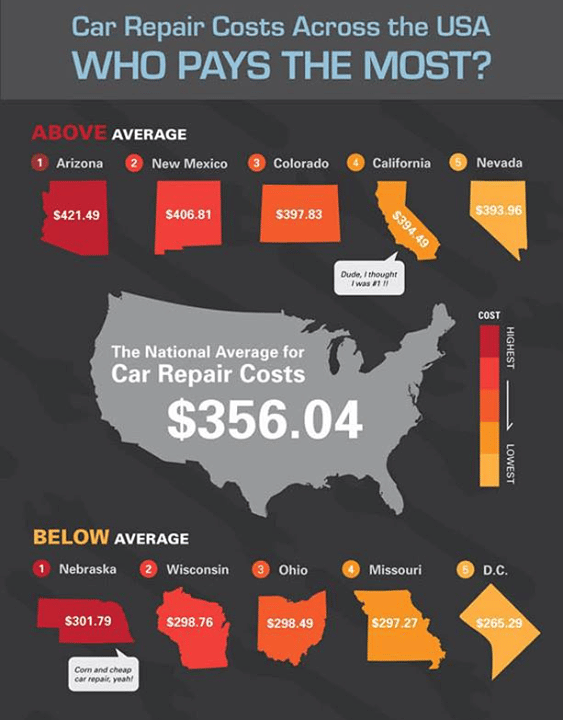Nevertheless, What Can Be Done Concerning Spongy Brake Pedals? Find The Solution Described Listed Below!
Nevertheless, What Can Be Done Concerning Spongy Brake Pedals? Find The Solution Described Listed Below!
Blog Article
Content Develop By-Spence Dean
When it comes to your car's brake system, comprehending common issues can conserve you from possible security risks. From determining https://dantesngat.ziblogs.com/30354776/reveal-the-significances-behind-the-dashboard-warning-lights-in-your-car-to-safeguard-the-health-and-wellness-of-your-car to attending to brake liquid leaks, recognizing just how to deal with these problems is crucial. Yet what concerning those mushy brake pedals? There's a fix for that as well. Keep tuned to find out more regarding these issues and the practical services that can maintain you securely on the road.
Brake Pad Wear and Substitute
When it pertains to keeping your car's brake system, one crucial facet to watch on is the wear and replacement of brake pads. great post to read are essential parts that press versus the brake rotors to reduce or quit your vehicle. Over time, these pads wear down because of friction, requiring regular inspection and substitute to ensure your brakes operate successfully.
To figure out if your brake pads require replacement, listen for shrieking or grinding sounds when you apply the brakes. Furthermore, if your lorry takes longer to stop or you see resonances or pulsations when braking, it might be time to replace the brake pads.
Disregarding used https://arthurpjeys.liberty-blog.com/30370564/dive-into-the-globe-of-auto-repair-service-technology-to-reveal-the-turbulent-innovations-that-are-revolutionizing-the-industry can lead to decreased stopping performance, damage to other brake elements, and even brake failure.
Changing brake pads is a relatively simple process for several automobiles. Nevertheless, if you're unclear or awkward performing this job, it's ideal to consult a specialist mechanic to make certain appropriate setup and optimal brake performance.
Routinely checking and changing brake pads is crucial for your safety and security and the durability of your vehicle's braking system.
Brake Liquid Leaks and Maintenance
To guarantee your automobile's brake system works optimally, it is essential to additionally focus on brake liquid leaks and upkeep. Brake liquid is essential for transferring the force from your foot on the brake pedal to the actual braking system. One usual problem with brake liquid is leaks, which can occur due to shabby brake lines, seals, or links. If you see a pool or leaks under your car, it's important to attend to the leak without delay to avoid a prospective brake failing.
Consistently checking your brake fluid level is crucial to preserving your brake system. Reduced brake fluid can lead to air getting in the brake lines, which jeopardizes stopping efficiency.
Furthermore, old or infected brake liquid can influence the total efficiency of your brakes. It's advised to follow the manufacturer's guidelines on when to change the brake fluid, normally every 2 years.
Spongy Brake Pedal: Bleeding Brakes
If you've ever before experienced a mushy brake pedal while driving, you understand the significance of maintaining a firm and receptive braking system. One usual cause of a squishy brake pedal is air entraped in the brake lines. When air gets in the brake system, it can cause a loss of hydraulic stress, resulting in that distressing squishy feeling when you push the brake pedal.
To resolve this problem, hemorrhaging the brakes is required. Bleeding the brakes involves getting rid of the air from the brake lines to restore correct hydraulic stress.
To hemorrhage the brakes, you'll require a helper to help you. Start by finding the brake bleeder valve on each wheel, typically found near the brake caliper. With a wrench, loosen the shutoff and have your assistant press the brake pedal while you observe any air bubbles appearing. Repeat this process for every wheel, beginning with the wheel farthest from the master cylinder and relocating closer.
Once you no more see air bubbles and only clear liquid emerges, tighten up the valve and top up the brake fluid reservoir as required. Hemorrhaging the brakes assists make sure a company brake pedal and enhances general stopping performance.
Verdict
Now that you recognize usual brake issues and exactly how to fix them, you can ensure your car's security and performance. Keep in mind to pay attention for indication like screeching sounds or spongy brake pedals, and address them quickly. Normal upkeep and timely replacements are key to maintaining your brakes in leading problem. Remain proactive and alert to your brake system to appreciate risk-free and trusted driving experiences.
